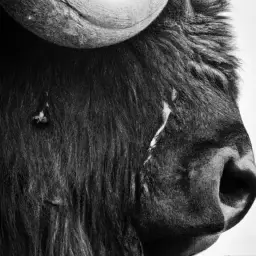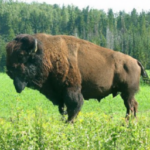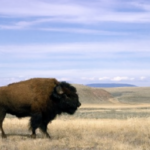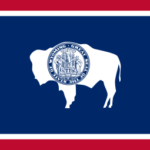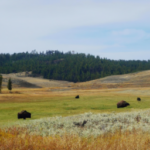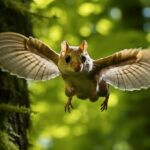In today’s article, you’ll discover the fascinating world of American bison, and more importantly, you’ll find out just how many of these majestic creatures are left in the wild. As an integral part of America’s rich natural heritage, it’s crucial to understand their population and the conservation efforts being made to protect them. So, get ready to dive into the numbers and gain a deeper appreciation for these iconic animals.
Historical Overview of American Bison
Pre-historic populations
The American bison, also known as the American buffalo, has a rich and storied history that stretches back thousands of years. These majestic creatures once roamed the vast landscapes of North America in staggering numbers. Fossil records indicate that bison have inhabited the region for at least 10,000 years, playing an integral role in the ecosystems they inhabited.
Hunting and near-extinction in the 19th century
Unfortunately, the arrival of European settlers in the 19th century marked a turning point for the American bison. As the Westward expansion gained momentum, the bison became a target for commercial hunting, primarily for their meat and hides. This indiscriminate hunting, driven by the demand for buffalo robes and land expansion, led to a rapid decline in bison populations. At one point, it was estimated that there were only a few hundred bison left in the entire United States.
Conservation efforts in the 20th century
Thankfully, the plight of the American bison did not go unnoticed. In the early 20th century, conservation efforts began to take hold. Organizations such as the American Bison Society and prominent individuals such as William T. Hornaday played a vital role in raising awareness and advocating for the protection and revitalization of the bison population. These efforts led to the establishment of captive breeding programs and the conservation of existing bison herds, helping to stabilize their numbers and preserve their genetic diversity.
Impact of Colonial Expansion on Bison Populations
Habitat loss due to westward expansion
The rapid westward expansion of European settlers had devastating consequences for the bison population. As more and more land was claimed for agriculture, industrial development, and urbanization, the natural habitats of the bison were destroyed or fragmented. The loss of the vast grasslands and prairies that had once supported large bison herds greatly contributed to their decline.
Impact of hunting for meat and hides
The arrival of European settlers also brought with them a strong demand for bison meat and hides. Buffalo hunting became an industry in itself, with hunters taking part in mass killings for profit. The indiscriminate hunting of bison not only threatened their survival but also disrupted the delicate balance of the ecosystems they inhabited.
Effect of railroads and systematic extermination
The construction of railroads across the American West played a significant role in the decline of the bison population. It enabled the transportation of vast quantities of bison products to eastern markets, driving up demand and intensifying the hunting pressure. Additionally, the systematic extermination of bison by the US Army, as a means to subdue Native American tribes who heavily relied on bison for their sustenance and cultural practices, further decimated the population.
Efforts of Native American Tribes to Preserve the Bison
Culture and spiritual significance of bison
For many Native American tribes, the bison have played a central role in their cultural and spiritual practices for thousands of years. The bison’s strength, resilience, and ability to provide for the entire community have made it a symbol of abundance, unity, and harmony. It is regarded with deep reverence, and rituals centered around bison hunts and ceremonies continue to this day.
Tribal conservation initiatives
Native American tribes have long been at the forefront of bison conservation efforts. Recognizing the vital role bison play in both their cultural heritage and the health of the ecosystem, tribes have established their herds and implemented sustainable management practices. Many tribes have also partnered with conservation organizations and government agencies to promote the conservation and restoration of bison populations.
Intertribal Buffalo Council and its role
The Intertribal Buffalo Council (ITBC) is an organization that brings together Native American tribes with the shared goal of preserving and promoting the bison. Established in 1992, the ITBC has been instrumental in facilitating the transfer of bison from public and private herds to tribal lands. Through collaborative efforts, the ITBC has helped tribes regain control over their cultural and natural resources while ensuring the long-term survival of the bison.
Role of the Federal Government in Bison Conservation
Creation of national parks and reserves
Recognizing the need for bison conservation, the federal government has played a significant role in establishing protected areas for these magnificent creatures. National parks and reserves such as Yellowstone National Park and Wind Cave National Park were created to safeguard and preserve bison populations. These protected areas provide a safe haven where bison can thrive without the threat of hunting or habitat loss.
Passage of relevant laws and regulations
In addition to creating protected areas, the federal government has also passed laws and regulations aimed at preserving bison populations. The American Bison Society, founded in 1905, advocated for the protection of bison and was instrumental in influencing legislation such as the Lacey Act of 1900 and the Sikes Act of 1960, which provided legal protections and management guidelines for bison and their habitats.
Introduction of bison in new habitats
To ensure the long-term survival and genetic diversity of the American bison, the federal government has initiated programs to reintroduce bison into habitats where they once thrived. By reintroducing bison to their historic range, such as the Great Plains and the Colorado Plateau, the government aims to restore vital ecological processes and promote the recovery of native ecosystems.
Current Status of American Bison
Estimated number of bison
Thanks to the collective efforts of conservationists, Native American tribes, and government agencies, the American bison population has experienced a remarkable recovery. Today, it is estimated that there are approximately 500,000 individual bison in North America, a significant increase from the brink of extinction.
Distribution across North America
Bison populations are not evenly distributed across North America. The majority of bison can be found in the United States, particularly in states such as Montana, Wyoming, and South Dakota. However, they can also be found in Canada, Mexico, and various other countries where conservation efforts have been undertaken.
Comparisons with historic populations
While the current population of 500,000 bison may sound impressive, it pales in comparison to the numbers that once roamed the continent. Historically, it is estimated that there were anywhere from 30 to 60 million bison in North America. This dramatic reduction highlights the need for continued conservation efforts to ensure the long-term survival of the American bison.
Different Populations of American Bison
Bison in natural preserves
Many bison populations reside within protected areas such as national parks, wildlife refuges, and state-owned lands. These natural preserves provide essential habitats for bison, allowing them to roam freely and contribute to the overall health and biodiversity of the ecosystems they inhabit.
Commercially raised bison
As interest in bison as a sustainable meat source has grown, there has been a rise in commercially raised bison herds. These herds are often found on private ranches and are managed for commercial purposes, primarily for meat production and eco-tourism. While these herds contribute to the overall bison population, particular attention must be paid to maintaining genetic diversity and preventing the negative impacts associated with domestication.
Bison in zoos and other captive settings
Zoos and other captive settings also house bison populations, providing educational opportunities for the public and contributing to conservation efforts through managed breeding programs. These captive populations play a crucial role in genetic diversity and can serve as a safeguard in case of catastrophic events that could threaten wild populations.
Population Dynamics of Bison Herds
Breeding and life cycle
Bison breeding and their life cycle are essential components for understanding their population dynamics. Bison reproduce through a polygynous mating system, where dominant males mate with multiple females within their herd. Calves are typically born in the spring and are cared for by their mothers within the protective group. Over time, young males will disperse and form bachelor herds, while females tend to remain with their natal herds.
Influence of predators and environmental factors
Historically, bison populations were regulated by natural predators such as wolves and Native American hunting practices. Today, the absence of these traditional predators has led to the need for active management to maintain healthy herd sizes. Additionally, environmental factors such as food availability, water sources, and climate conditions play a significant role in determining the carrying capacity and overall dynamics of bison populations.
Genetic diversity and inbreeding concerns
Maintaining genetic diversity within bison populations is crucial for their long-term resilience and survival. Inbreeding can lead to reduced genetic diversity and increased susceptibility to diseases and other threats. Careful management of bison herds, including genetic monitoring and translocations between herds, is essential to avoid inbreeding and ensure the long-term viability of the species.
Threats to the American Bison Today
Continued habitat loss and fragmentation
Despite significant progress in bison conservation, habitat loss and fragmentation continue to pose significant threats to their survival. As urbanization, agriculture, and infrastructure development expand, the remaining natural habitats of bison are increasingly threatened. Fragmentation of these habitats limits the ability of bison populations to migrate, leading to reduced genetic diversity and increased vulnerability to climate change and disease.
Diseases and risks of hybridization
Disease, particularly brucellosis, poses significant risks to bison populations. Brucellosis can lead to reproductive issues and reduced population growth. The proximity of bison to domestic cattle can facilitate disease transmission, further complicating conservation efforts. Additionally, interbreeding between domestic cattle and bison can result in hybridization, potentially diluting the unique genetic traits of purebred bison.
Climate change and its potential impacts
The changing climate poses another significant threat to bison populations. Rising temperatures, altered precipitation patterns, and increased frequency of extreme weather events can disrupt the availability and quality of bison habitat. Changes in vegetation composition may affect the availability of food resources, while increased droughts and heatwaves can lead to water scarcity. These climate-related challenges can have profound impacts on the health, distribution, and survival of bison populations.
Future of the American Bison
Projections for population growth
Despite the many challenges they face, there is hope for the future of the American bison. With continued conservation efforts, it is projected that bison populations will continue to grow and expand. The success of captive breeding programs, habitat restoration initiatives, and collaboration between various stakeholders bode well for the long-term survival and recovery of the species.
Importance of continuing conservation efforts
While the American bison has made a remarkable recovery, it is essential to continue conservation efforts to ensure their long-term survival. Preserving and restoring their natural habitats, managing herd populations sustainably, and addressing threats such as disease and hybridization are crucial components of ongoing conservation initiatives. Collaboration between government agencies, Native American tribes, conservation organizations, and the public will be essential in safeguarding the American bison for generations to come.
Potential for restoration in more of their historic range
Efforts are underway to restore bison populations in more of their historic range. Through reintroduction programs, bison are being returned to landscapes where they once thrived. This not only benefits the bison themselves but also contributes to the overall restoration of ecosystems and the promotion of biodiversity. By reestablishing bison populations in suitable habitats, we can begin to repair the damage caused by centuries of human activity and provide future generations with the opportunity to witness the majesty of these iconic creatures in their natural environments.
Is the American Bison the Same as a Buffalo?
The difference between bison and buffalo lies in their taxonomy and geographic distribution. While American bison (Bison bison) are native to North America, buffalo mostly refers to the water buffalo or cape buffalo found in Africa and Asia. So, no, the American Bison is not the same as a buffalo.
Conclusion: The Resilience and Symbolism of the American Bison
Lessons from the Bison’s recovery
The remarkable recovery of the American bison from the brink of extinction offers valuable lessons for conservation efforts worldwide. It demonstrates the resilience of nature and the potential for recovery when passionate individuals, organizations, and governments unite in the pursuit of a common goal. The success story of the bison serves as a reminder that it is never too late to reverse the impacts of human activities and restore balance to our natural world.
The bison as a symbol of American natural heritage
The American bison holds a special place in the hearts and minds of people across the United States. It is an iconic and beloved symbol of the natural heritage of this vast land. The resilience, beauty, and cultural significance of the bison have made it a revered national symbol. It serves as a powerful reminder of the interconnectedness of humans and the natural world, and the importance of preserving our natural heritage for future generations.
What the bison tells us about our relationship with nature
The story of the American bison provides profound insights into our relationship with nature. It speaks to the immense impact that human activities can have on ecosystems and the need for responsible stewardship. It also highlights the importance of cultural and spiritual connections to the natural world and the role that indigenous communities play in conservation efforts. The bison’s recovery is a testament to the power of collective action and the potential for a harmonious coexistence between humans and wildlife. By learning from the lessons of the bison, we can forge a more sustainable and compassionate relationship with the natural world.

